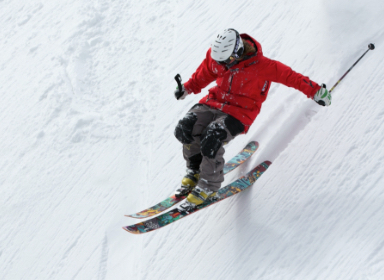Winter Sports Science

As the winter nights start to draw in, many will take to winter sports to escape the gloom, and embrace the cold! There are approximately 2,000 alpine skiing locations globally. Skiing, snowboarding, ice skating and other sports are all extremely popular. Skiing for example draws in millions of people every year worldwide. Notably, the Alps are responsible for 43% of all global skier visits, with an average of 210 million skier-days annually!
While the vast majority of people understand that ice is slippy and makes some things glide further than normal, there is a huge amount of science going on to make sure that skis glide smoothly, ice skates grip correctly, and curling stones, well… curl enough! Read on to discover the science behind these sports, and how tribology plays a key role in them!
Ice skating is one of the more graceful winter sports, and at its heart is the interaction between the skate blade and the ice. Contrary to popular belief, it isn’t the pressure of the skaters body weight on the blade that melts the ice – but rather the ice’s intrinsic property of having a thin film of liquid water on its surface, even at temperatures well below freezing.

This slippery water film acts as a natural lubricant, facilitating the skater’s movement, and can be as small as 1 nanometre at -1°C! The glide in ice skating is a result of this layer reducing the friction between the blade and the ice. The blade’s design and sharpness are also crucial in optimising this interaction, allowing skaters to manoeuvre efficiently with a mix of speed and precision.
A well-maintained blade, with the right angle and sharpness, allows skaters to harness this water film effectively, making movements like spins, jumps, and intricate footwork possible with minimal resistance.

The thrill of alpine skiing owes much to tribology. Here, the interaction is between the ski base and the snow. Different snow conditions present an array of conditions that can drastically impact a skier’s experience, and can require various ski wax formulations to modify the friction between the ski and the snow.
By choosing the right wax, skiers can maximise glide and control. Different wax formulations are tailored to suit specific snow conditions. For example, some waxes are designed to reduce friction on wet, slushy days, while others aim to provide grip on colder, icier terrains.
Snowboarding, much like skiing, involves a critical relationship between the board and the snow. The board’s shape, its edges, the base material, and even the wax all play roles in how the board interacts with the snow’s surface.

However, snowboarding makes more use of carving than skiing does, which creates some more unique tribological and frictional characteristics for snowboarders. Carving involves tilting the snowboard on its edge to slice through the snow without sliding, giving snowboarders more grip!
By carefully picking the appropriate wax based on the day’s conditions, skiers and snowboarders optimise the frictional properties of their “twigs” and “planks”, maximising glide when necessary, and control when carving turns. Wax not only improves glide and performance, but also protects the base from wear and tear, just like lubricants in a gearbox!
Curling might seem a slower-paced winter sport, but the tribological interactions at play are if anything, the most puzzling and interesting out of any winter sport! Despite the precision of top curlers, the fundamental physics of curling remains a hotly debated topic among scientists.
Generally, spinning flat-bottomed objects on a flat surface causes them to move opposite to the spin direction. For instance, if you spun a glass clockwise on a table, it would drift left. This is because the object’s forward lean adds more friction to its leading edge, making it veer in the opposite direction of its spin.

However, curling stones defy this norm. They move in the same direction as their spin, to the puzzlement of researchers. Two primary theories attempt to explain this. One is that the stone slightly tips forward while sliding, warming the ice and forming a water film. This lubrication reduces front-end friction, contrasting the usual friction dynamics.
A differing theory suggests that the stone’s contact surface scratches the ice in its rotation direction. When the stone’s back edge glides over these scratches, it’s inclined to follow them, causing the curling effect. Both theories underscore the need for more research into what is possibly the most intriguing tribological behaviour in all of sport, let alone winter sports!
Winter sports aren’t just about athletes showing off their skills; they’re a perfect example of science in action. From ice skaters gliding smoothly thanks to a super-thin layer of water on the ice, to skiers and snowboarders choosing the right wax to slide just right on the snow, it’s all about understanding friction. Even in curling, where stones slide and turn in surprising ways, there’s a mystery waiting to be solved. So, next time you watch these sports, remember there’s a whole world of science making all the magic happen!
To stay updated with the newest industry insights through our articles and news, click here!
